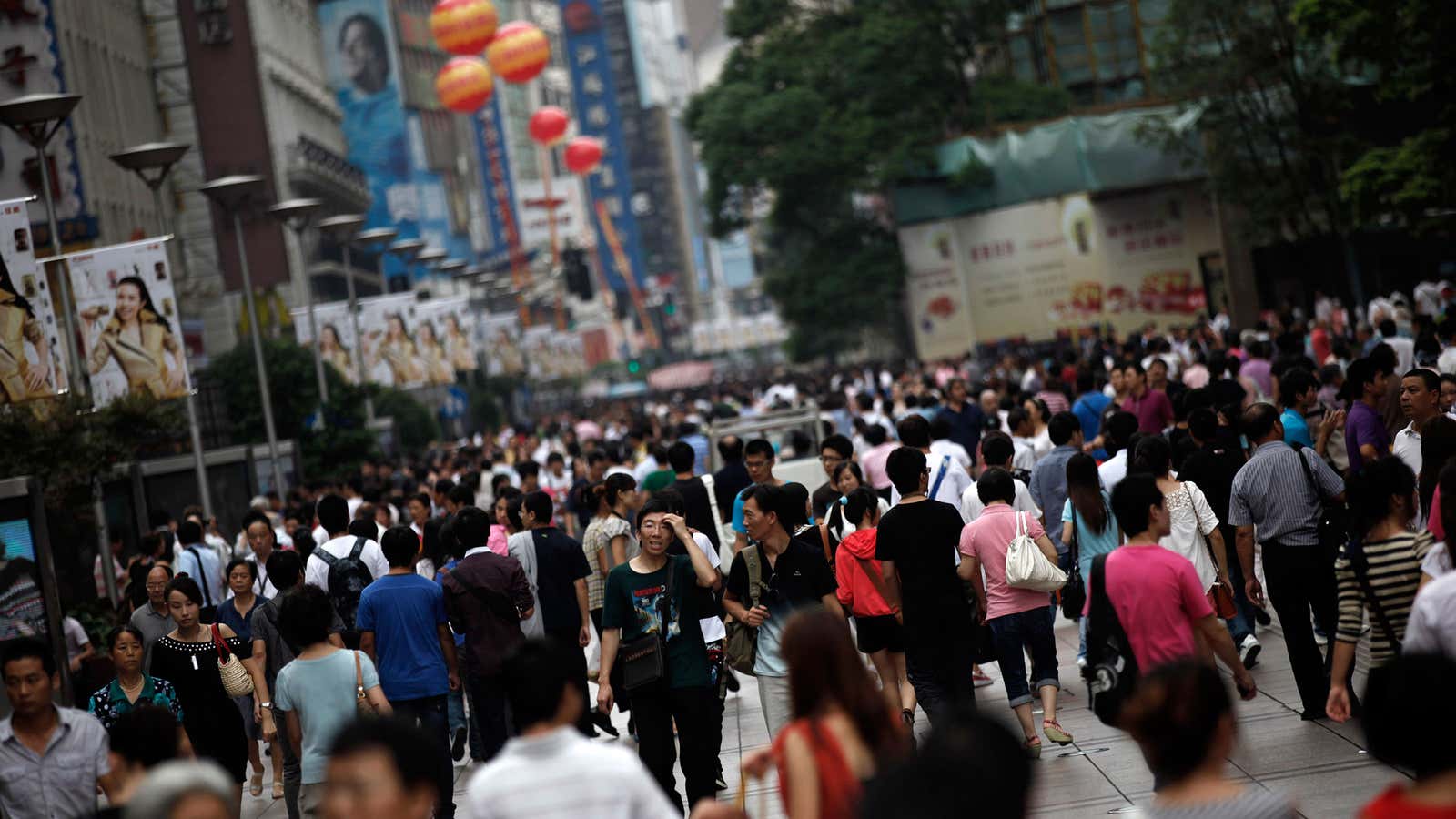Here’s one way to understand China’s growth right now: Picture a flabby, middle-aged man running a marathon. While taking crystal methamphetamine.
That’s the image conjured up by Peking University finance professor Michael Pettis in trying to explain the government’s attempts to stimulate an economy to make up for what’s really happening. It’s been so successful, notes another analyst, that the country even has hippies. But more on that later. First the recap:
China’s GDP in the third quarter was up 7.4% from a year earlier, its slowest pace of expansion since the first quarter of 2009. This quarter’s performance was also slower than the second quarter’s 7.6% rise. But as we reported right after the release, it’s not all bad news. The jury is out, and whoever gets this one right is going to be seriously wealthy. Here are the main bullish and bearish arguments for China’s future, so you can decide.
BULL: China is not slowing, it’s maturing. Exhibit A: Hippies.
Louis Vincent-Gave of research house Gavekal is a China bull, and his opinion is notable because he does not work for an investment bank (cynics would say they publish rose-tinted China research to get work advising government-backed companies on IPOs).
In an October 15 note, Gave related a recent trekking holiday in Nepal, where he encountered several small groups of young mainland Chinese hiking in “hippie shirts and trail shoes.” This, to him, signified China is developing beyond the stage where tourism means visiting Hong Kong or Macau in huge tour groups of 100 people or more, dressed in fake Louis Vuitton and taking several hundred photos of shopping malls or “laowei” (foreigners).
“China is changing much faster than people realise,” Gave said. He added that during China’s Golden Week national holiday in early October, tourist sites were flooded with 425 million visitors, a 41% increase year on year.
BULL: A host of behind the scenes stimulus measures are working.
The Beijing government has not announced a major economic stimulus project, as it did in 2009-10. But since the summer, central and local planners have begun propping up GDP with lavish spending on new projects. Industrial production rose 9.2% in September, year on year, after touching a 39-month low in August. So it is likely Chinese manufacturers are seeing the horrific conditions they have been laboring under start to ease.
HSBC economist Qu Hongbin wrote in a note:
September’s improvement is faster and stronger than expected, implying that the recent acceleration of policy easing – both the approval of infrastructure projects and the improving liquidity conditions- is feeding through to generate new demand. As we expected, the infrastructure-led investment growth is offsetting the weakness in other sectors, becoming the key driver for the rebound of investment growth.
BEAR: China’s over-stimulated economy is like marathon runner who needs drugs.
In an Oct. 7 blog post, Pettis argued that China cannot keep boosting GDP via stimulus spending forever. His exact words were:
It is as if you saw a middle-aged man in terrible physical shape running a marathon, and you predicted that after five or six miles he would be forced to quit. If however he took out a syringe and shot himself up with crystal meth, he would be able to continue running a few more miles, but this doesn’t mean that your analysis and prediction were wrong. It means that in a few more miles he will be worse off than ever (or will have to take an even bigger dose of crystal meth).
Now, everyone knows drugs are bad.
China may, however, have become too reliant on temporary fiscal stimulus to be able to think its way out of the problem. As a fictional Betty Ford counselor said in a seminal episode of South Park, “the problem with drugs is that you forget to stop doing them.”
BEAR: Serious demographic challenges lie ahead.
Thinking beyond quarterly or monthly data, Pettis’ middle aged man analogy is so good because China’s population is maturing. That probably means slower urbanisation and less growth. In 2009, the China bulls over at McKinsey forecast that by 2030, 350 million Chinese will have moved from the countryside to the cities.
If that forecast is right, this means much extra demand for housing and services for a very long time.
The bears argue that such rapid urbanisation will not continue for the next two decades because China, with its one-child policy, is running out of young people. The link between age and urbanisation is thus: as China’s working age population shrinks, they will demand higher wages. In fact, they already are. This is prompting manufacturers to check out new sources of cheap labor, such as Vietnam.
